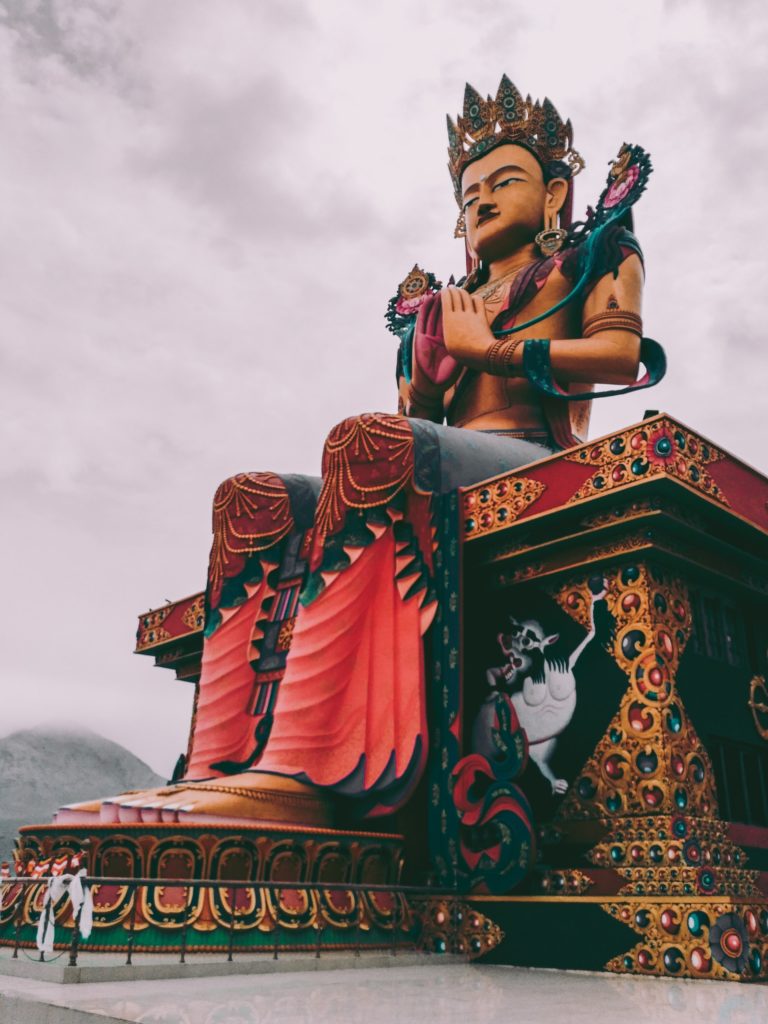
Mahayana schools consider the Mahayana Sutras as authoritative scriptures and accurate rendering of Buddha’s words. These traditions have been the more liberal form of Buddhism allowing different and new interpretations that emerged over time.
Mahayana flourished in India from the time of Ashoka, through to the dynasty of the Guptas (4th to 6th-century). Mahāyāna monastic foundations and centers of learning were established by the Buddhist kings and the Hindu kings of the Gupta dynasty as evidenced by records left by three Chinese visitors to India. The Gupta dynasty, for example, helped establish the famed Nālandā University in Bihar. These monasteries and foundations helped Buddhist scholarship, as well as studies into non-Buddhist traditions and secular subjects such as medicine, host visitors and spread Buddhism into East and Central Asia.
Native Mahayana Buddhism is practiced today in China, Japan, Korea, Singapore, parts of Russia and most of Vietnam (also commonly referred to as “Eastern Buddhism”). The Buddhism practiced in Tibet, the Himalayan regions, and Mongolia is also Mahayana in origin but is discussed below under the heading of Vajrayana (also commonly referred to as “Northern Buddhism”). There are a variety of strands in Eastern Buddhism, of which “the Pure Land school of Mahayana is the most widely practiced today.”. In most of this area, however, they are fused into a single unified form of Buddhism. In Japan, in particular, they form separate denominations with the five major ones being: Nichiren, peculiar to Japan; Pure Land; Shingon, a form of Vajrayana; Tendai, and Zen. In Korea, nearly all Buddhists belong to the Chogye school, which is officially Son (Zen), but with substantial elements from other traditions.

Vajrayana traditions
The goal and philosophy of the Vajrayāna remain Mahāyānist, but its methods are seen by its followers as far more powerful, so as to lead to Buddhahood in just one lifetime. The practice of using mantras was adopted from Hinduism, where they were first used in the Vedas.
Various classes of Vajrayana literature developed as a result of royal courts sponsoring both Buddhism and Saivism. The Mañjusrimulakalpa, which later came to classified under Kriyatantra, states that mantras taught in the Saiva, Garuda and Vaisnava tantras will be effective if applied by Buddhists since they were all taught originally by Manjushri. The Guhyasiddhi of Padmavajra, a work associated with the Guhyasamaja tradition, prescribes acting as a Saiva guru and initiating members into Saiva Siddhanta scriptures and mandalas. The Samvara tantra texts adopted the pitha list from the Saiva text Tantrasadbhava, introducing a copying error where a deity was mistaken for a place.
Tibetan Buddhism preserves the Vajrayana teachings of eighth-century India. Tantric Buddhism is largely concerned with ritual and meditative practices. A central feature of Buddhist Tantra is deity yoga which includes visualization and identification with an enlightened yidam or meditation deity and its associated mandala. Another element of Tantra is the need for ritual initiation or empowerment (abhiṣeka) by a Guru or Lama.[500] Some Tantras like the Guhyasamāja Tantra features new forms of antinomian ritual practice such as the use of taboo substances like alcohol, sexual yoga, and charnel ground practices which evoke wrathful deities.

Zen
Zen Buddhism, pronounced Chán in Chinese, seon in Korean or zen in Japanese (derived from the Sanskrit term dhyāna, meaning “meditation”) is a form of Mahayana Buddhism found in China, Korea, and Japan. It lays special emphasis on meditation, and direct discovery of the Buddha-nature.
Zen Buddhism is divided into two main schools: Rinzai and Sōtō, the former greatly favoring the use in meditation on the koan (a meditative riddle or puzzle) as a device for spiritual break-through, and the latter (while certainly employing koans) focusing more on shikantaza or “just sitting”.
Zen Buddhism is primarily found in Japan, with some presence in South Korea and Vietnam. The scholars of Japanese Soto Zen tradition in recent times have critiqued the mainstream Japanese Buddhism for dhatu-vada, that is assuming things have substantiality, a view they assert to be non-Buddhist and “out of tune with the teachings of non-Self and conditioned arising”, states Peter Harvey.
